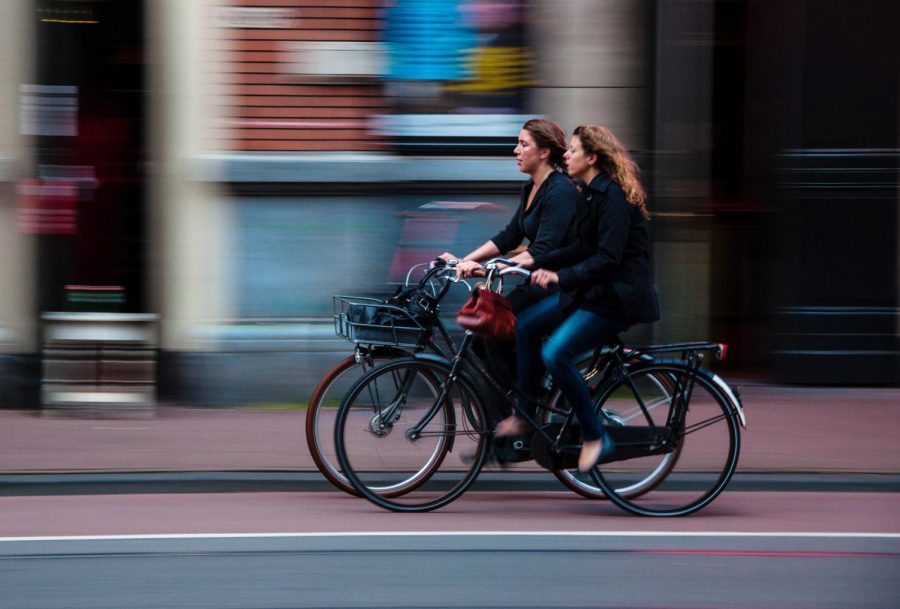WSU community should embrace biking culture
New biking racks will help ease the stress of parking online, but only if students participate
Biking will not solve the problems of parking on campus, but it will alleviate some of it by offering an alternative to driving.
February 6, 2018
Transportation Services at WSU purchased 30 bike racks to meet bike parking demands and replace outdated racks on campus. This decision is intended to help encourage bike commuting as a way to ease overcrowding in campus parking lots.
Director of Transportation Services John Shaheen said the bike racks had an estimated cost between $350 and $788 each, depending on size and type. The 30 racks totaled $22,000.
With parking being such a problem, this investment is likely one of the most cost-effective methods of reducing car traffic. Despite the hefty price tag, it provides a good opportunity for WSU to embrace biking culture.
Brent Atkinson, transportation demand management coordinator, said a common theme among transportation survey results from fall 2016 was that people who were already bike commuters, or were interested in biking, felt the bike racks on campus were not adequate.
Transportation Services is a self-funded department, and therefore won’t draw any money from students’ tuition or from the state. Instead, the department receives most of its funding from the sale of parking passes to faculty and students on campus.
People who buy parking passes are essentially wasting their money by paying for bike racks they likely won’t use. For these $22,000 bike racks to be worth it, students have to buy in to the idea of biking.
The only way money collected through the sale of parking passes makes its way back to the people who pay for them is if students and faculty make use of resources like the new racks.
Bike racks are comparatively less expensive than the alternative. Shaheen said the cost of constructing parking spaces can range from $10,000 per space for outdoor stalls to $50,000 for indoor stalls.
These high costs come from more than just materials and labor. Construction costs in Pullman are sometimes greater than in other urban areas, said Chris Boyan, associate director of Transportation Services, and there are costs related to storm water runoff as well.
With these prices in mind, it is easy to see why building more parking lots is not in the Transportation Service’s best financial interest.
“Improving and increasing bike parking options is part of Transportation Services’ strategy to reduce parking demand by encouraging transportation options,” Shaheen said. “The bike racks that are being replaced are not suitable for supporting a parked bike, or for securing a bike.”
By making biking a more attractive option, Transportation Services is hoping more people will choose to bike. However, this hope relies on students taking advantage of these alternative resources and not allowing them to go to waste.
“We do not expect that bike parking will replace the need to provide additional parking spaces,” Shaheen said, “but perhaps we can reduce parking demand for cars by making bike travel and parking more attractive.”
Transportation Services cannot solve the issue of parking through bike rack investments alone. The lack of parking requires student cooperation.
Parking is a major issue for students and staff alike. If building more spaces is not within our financial ability, the best we can do is support the efforts of Transportation Services.




















